PHANTEKS ENTHOO EVOLV ATX Tempered Glass edition
Today we are reviewing not what makes a computer, but rather what contains it. Today is case day! This is my first case review, therefore a very special one. The Phanteks ENTHOO EVOLV ATX Tempered glass.
Every computer has its own personality, and it starts with its box. Far are the 90’s when the same white box would serve all.
We are in the golden age of computer casing. Really, we are. And I selected this case to make that point.
The Phanteks ENTHOO EVOLV ATX has been around for a while. But the Tempered Glass editions is brand new and it comes with a few perks.
Measurements of the ENTHOO EVOLV ATX
Our case is 235 mm wide, 495 mm long, 510 mm deep.
It weighs about 10 kg empty, and can accommodate Micro ATX, Mini ATX, ATX and kinda of EATX, up to 264 mm.
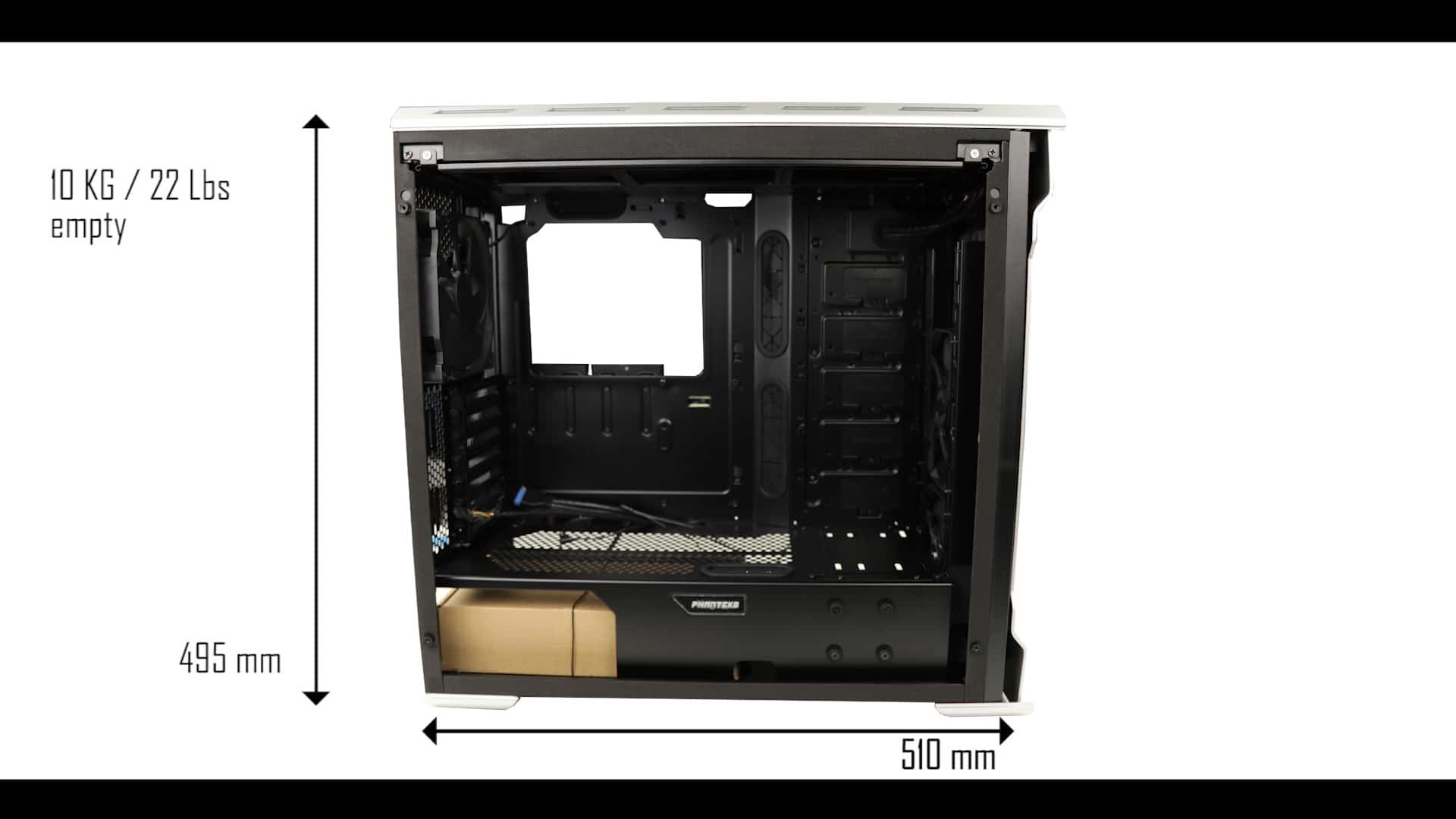
So definitely a mid tower for more compact builds! Forget about Extreme motherboards or fully-fledged Threadripper builds!
Design
Our Phanteks ENTHOO EVOLV ATX features the minimalist Angular design that has been Phanteks brand appeal for the past few years. Very galactic and minimalist.
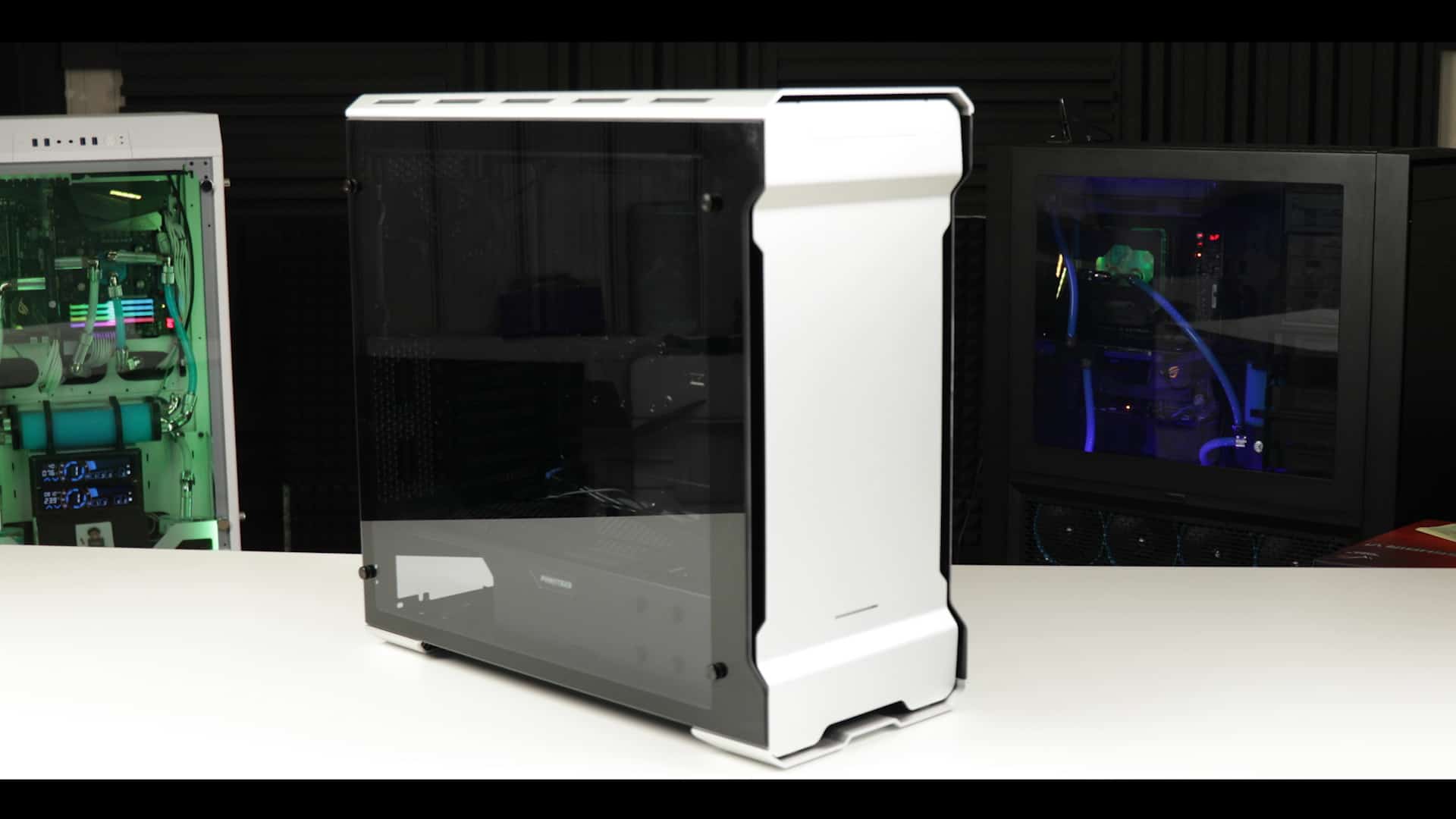
The metallic body is dressed up by 4 titanium grade sand-blasted, anodized coated aluminium sheets, and boy oh boy, does it look and feel amazing! Right here and there, on first glance and touch, you know that this is a premium article!
In addition, this case is available in three different colours:
- Satin Black
- Anthracite Grey
- Galaxy Silver
or as I call it, Dark grey, Middle Grey, and not that grey.
On the northern side of our front panel, we have a magnetized and padded IO cover which, very smoothly, opens and closes over our front peripherals.
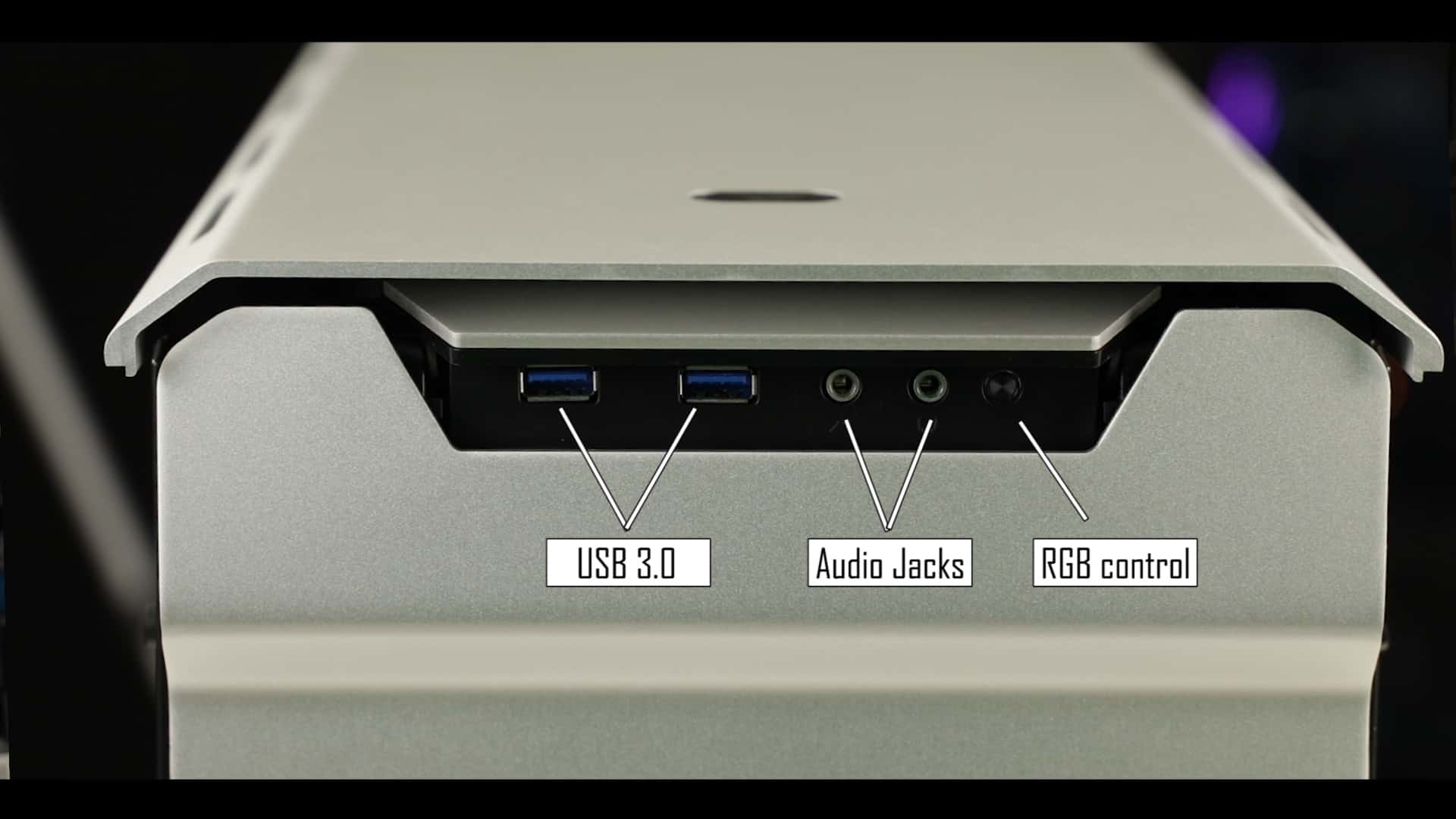
Talking of which, we have, two 3rdgen USB inlets, our front panel audio inlets, and colour control buttons for our casing RGB and RGB exports. I will say that, since it is a brand new release, I was surprised (and disappointed) not to see a type C front USB port. But definitely not a deal breaker.
In addition, this case does not feature a reset button, and I like that. Less is more!
On the lower side of our front case, throne a very simple yet elegant horizontal indentation, which houses a horizontal RGB strip. Worth noting, this strip is AURA compliant (yes yes) and can sync its lighting effect with your motherboard, and whatever AURA compliant component you got running in your build!

You can also remove that front panel to access its front air filter. Behind that filter, we will have access to our fan bay. The chassis comes pre-installed with two 120 mm high-pressure fans, but can support up to three 120 mm or two 140 mm fans (provided).
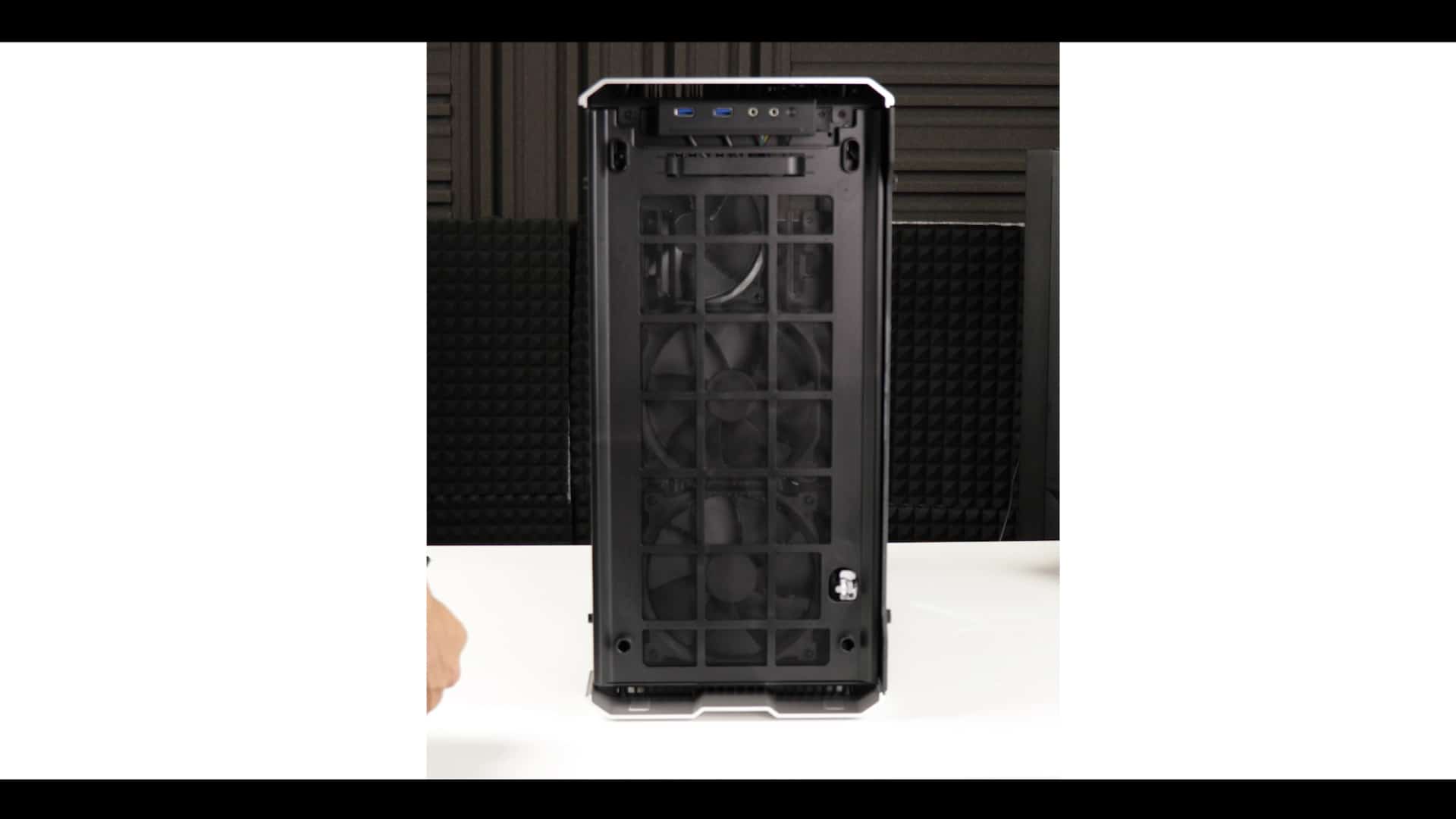
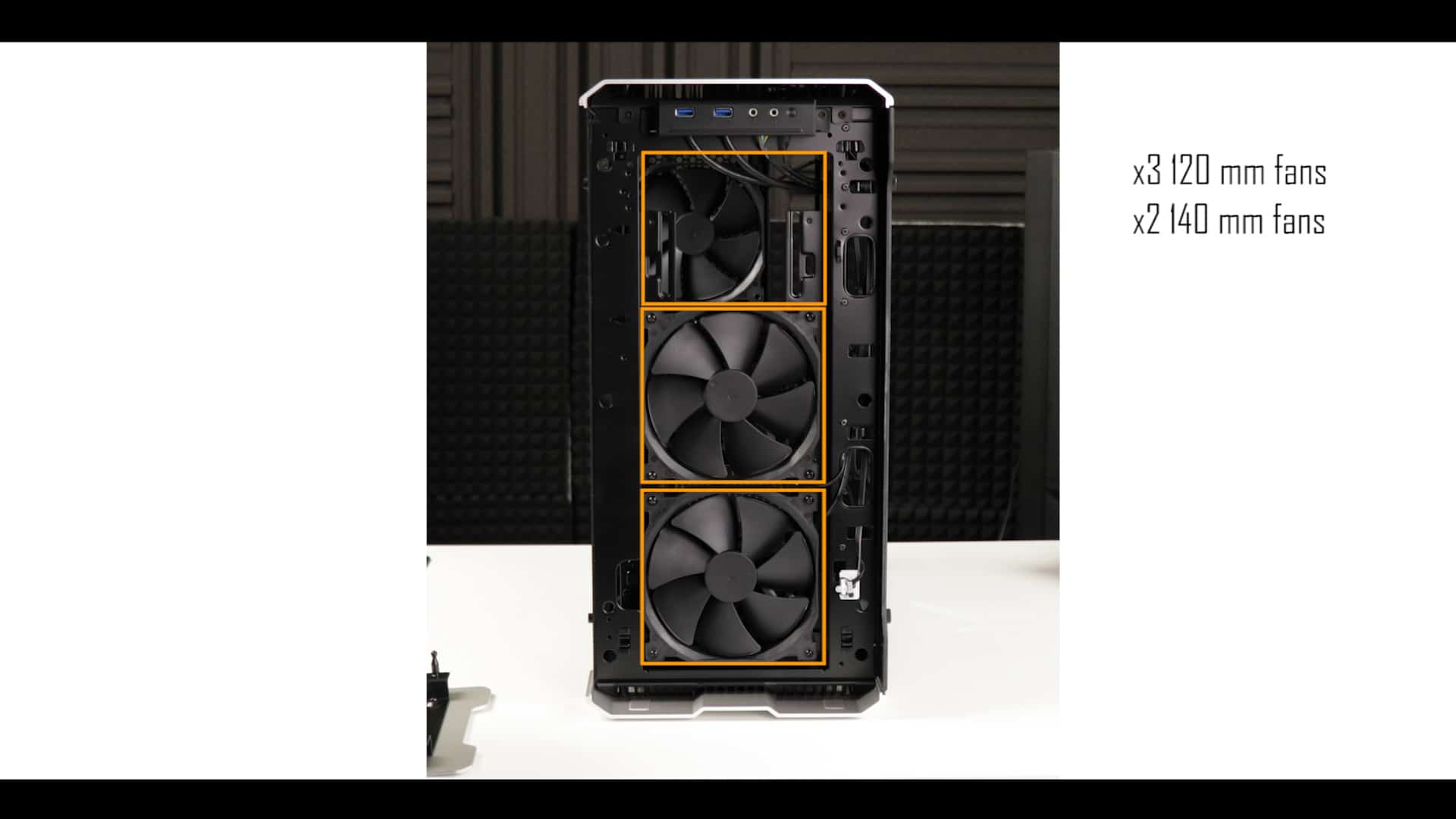
Tempered glass side panels (that’s why we are here)
The side panels are what motivated this all lineup release, the tempered glass.
Anyone who has some serious aesthetic consideration regarding his/her build, will not bargain for anything less but tempered glass.

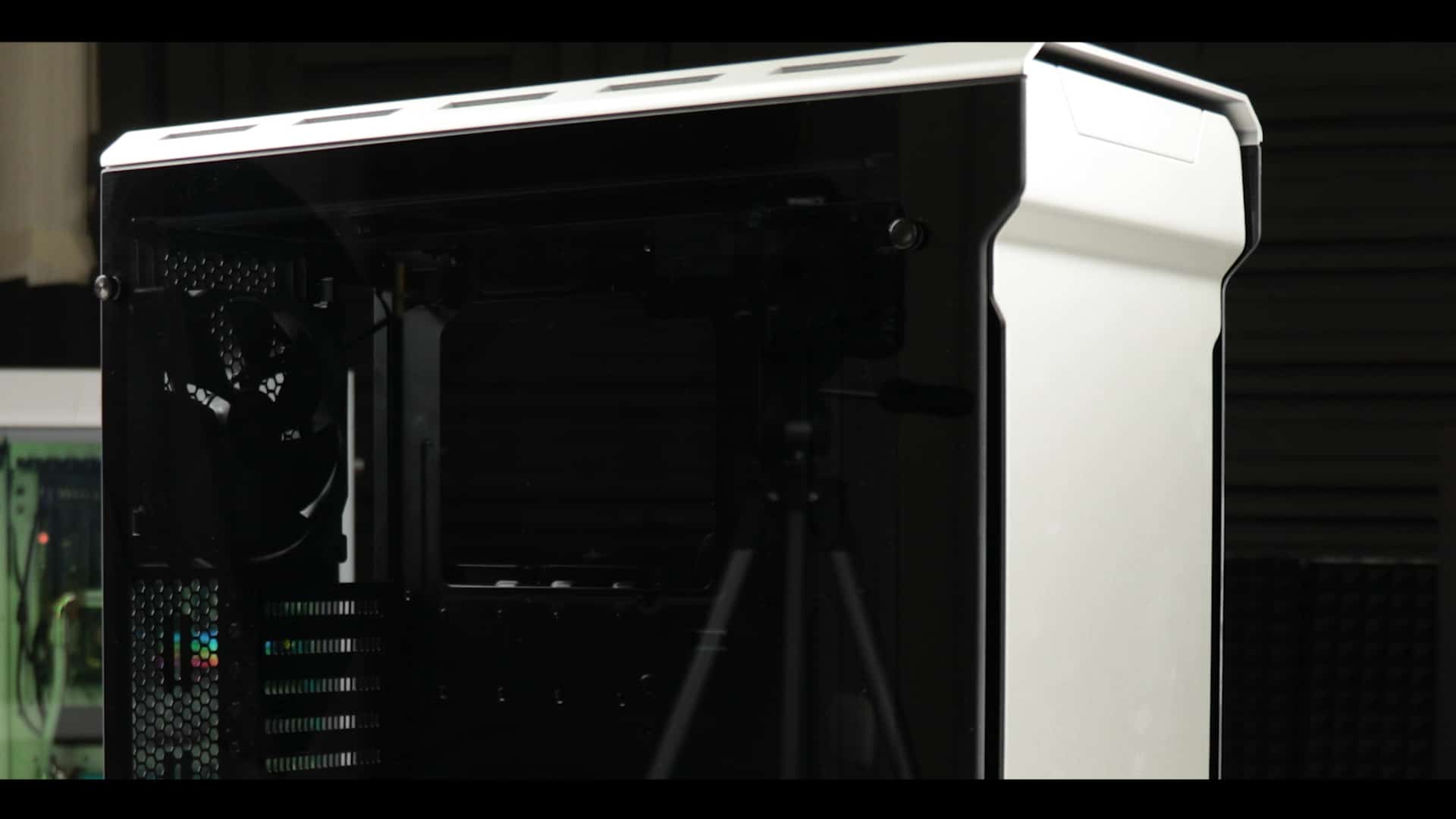
And here, both sides of our chassis are equipped with 5 mm thick tempered glass panels. They have been darkened to about 60% and, have been shaped to perfectly match the chassis frontal shape. No small feat, and an appreciable show of care from the Phanteks team.
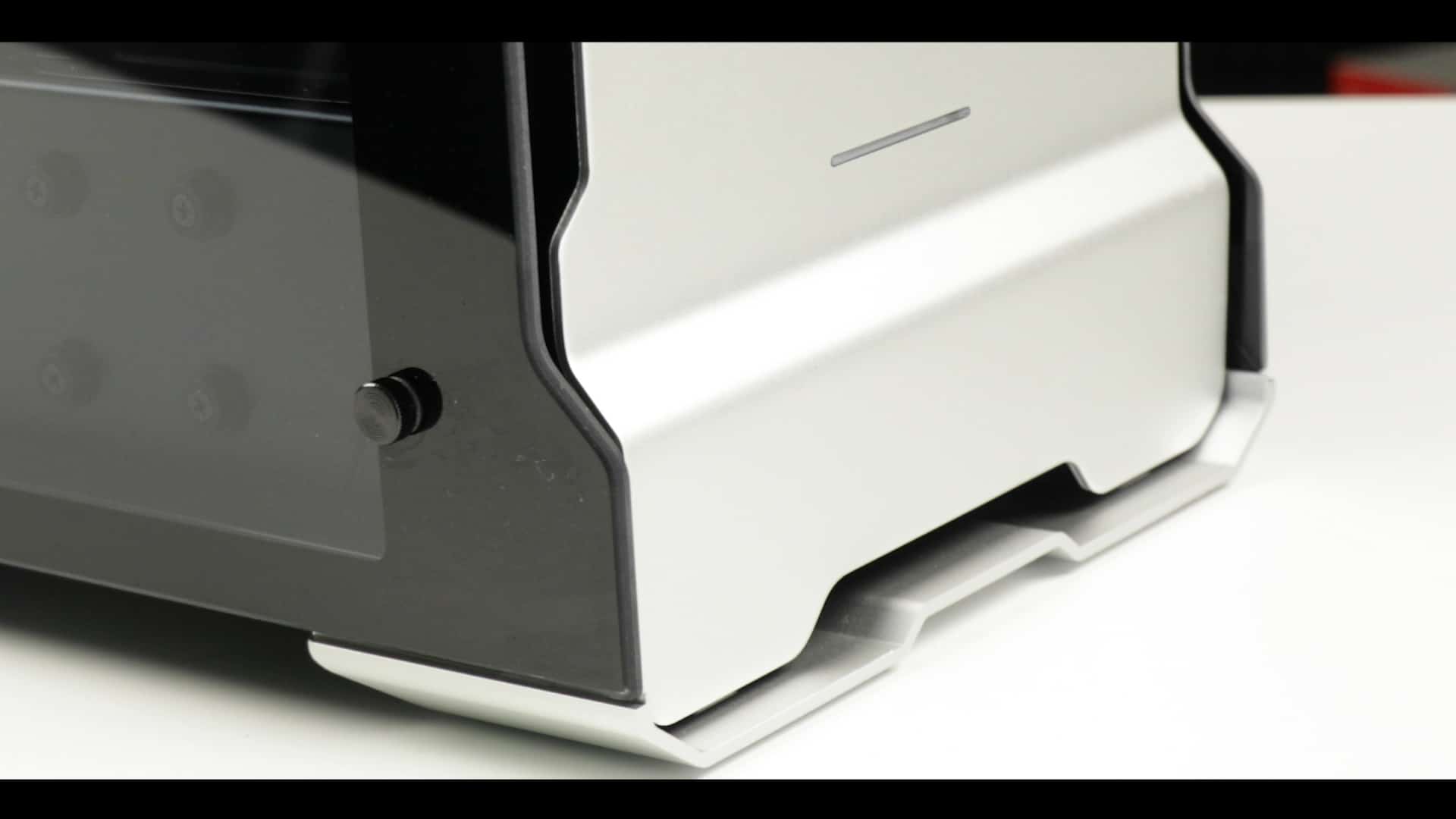
Both sides being covered by tempered glass panels, meaning that our cabling, which usually stays hidden will be exposed. So, you’ll definitely need to keep it well managed.
I’d like to note that both sides of the tempered glass are being well protected. By that I mean we do have a nice padding surrounding its all sides to welcome it, and the thumb screws have padded buffer padded points to protect the glass whenever you tighten them.
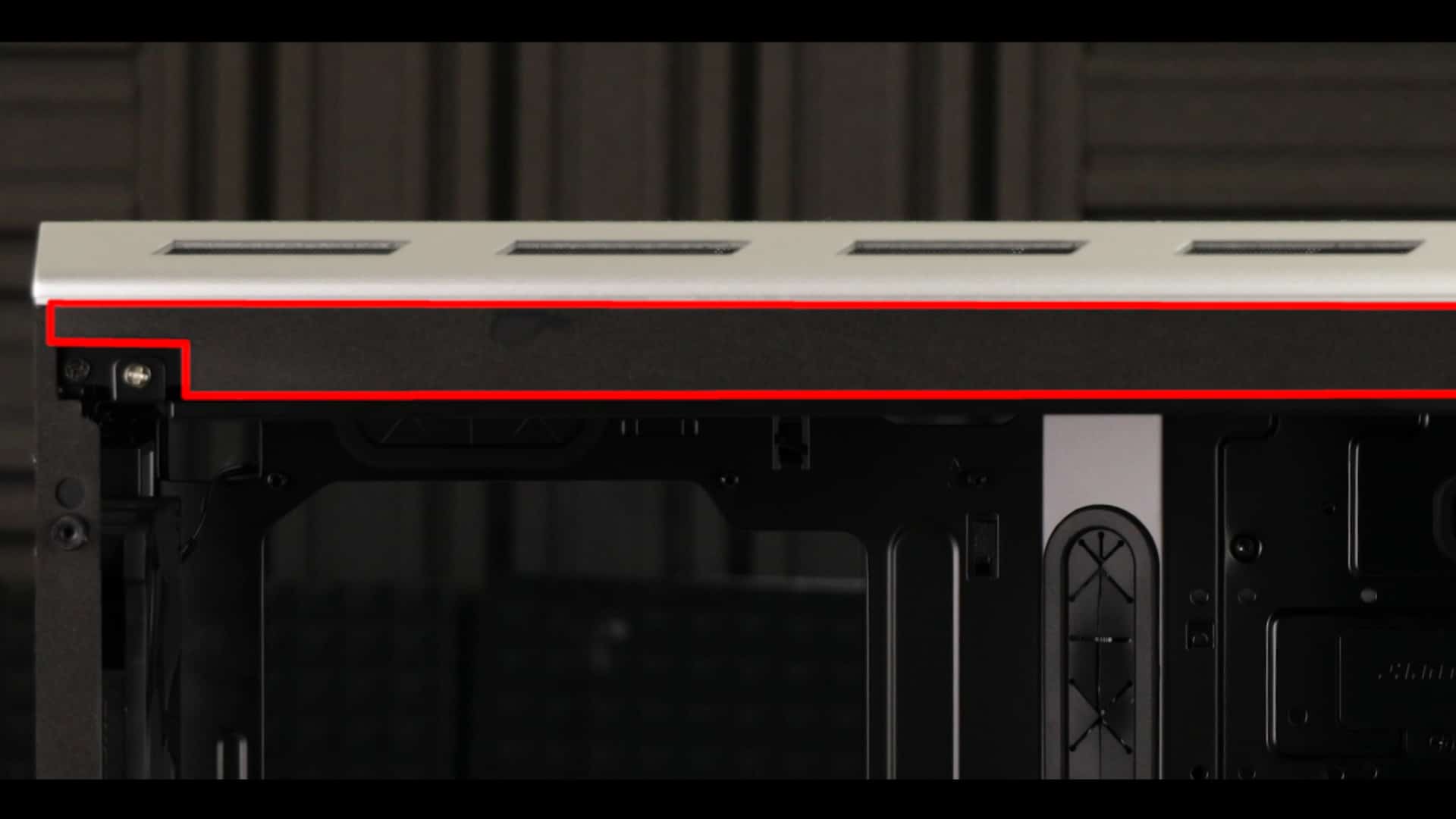
And I further think that this padding helps to soundproof our system, which is a very nice and premium touch.
But where is the start button?
On top of our case, surrounded by a see-through plastic piece which will conduct both our power LED lighting through and our RGB AURA effect.
And again, we have a beautifully angled top panel, which features air vents opening on its sides, and a molecular looking grid. And you know I love molecular looking stuff!

Radiators
Removing the case roof will give us access to our mountable radiator rail, which can accommodate a 280 by 140 mm radiator or a longer but thinner 360 by 120 mm radiator. There is plenty of space for push OR pull fan configuration. Pretty rad!
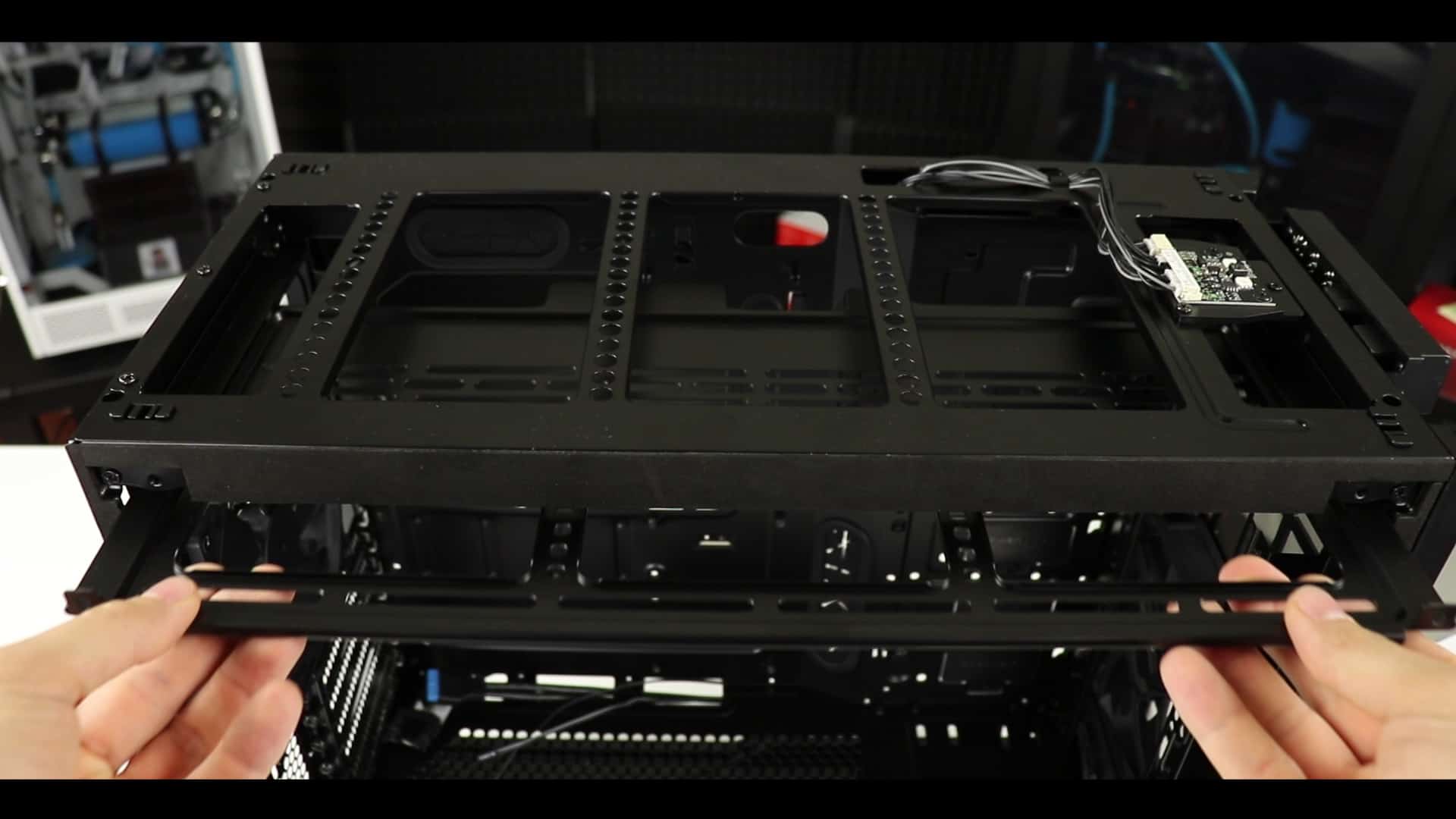
In addition, we can add not one, but two more radiators! An impressive design feat for an ATX mid-tower.
One in front of our case. Again, up to 240X140 mm or a 360 by 120 mm, and a third one in the rear of our case, up to 140 mm. This last one usually belongs to an All-in-One cooling loop.
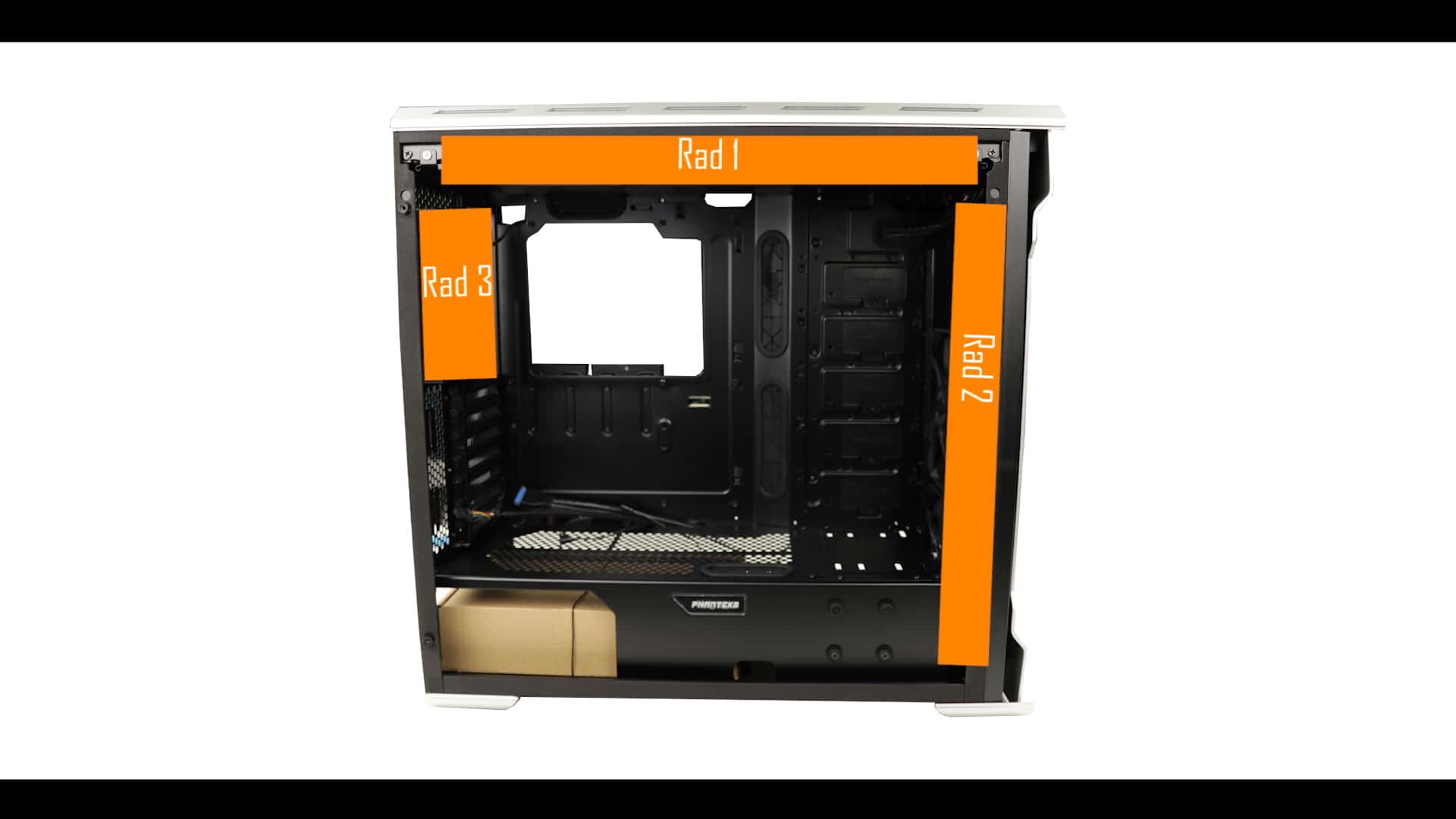
That is a lot of radiators. Imagine, we could potentially cram a two custom cooling water loop in there, but that would be an incredibly tight fit and I would advise against it. Especially knowing that you would have to part with every single Hard Disk trays to make that happen!
HDD trays (lots of them)
Talking of which!!!! The Enthoo Evolv ATX features up to 5 modular 3.5-inch Hard disk trays on the front side of our case floor,
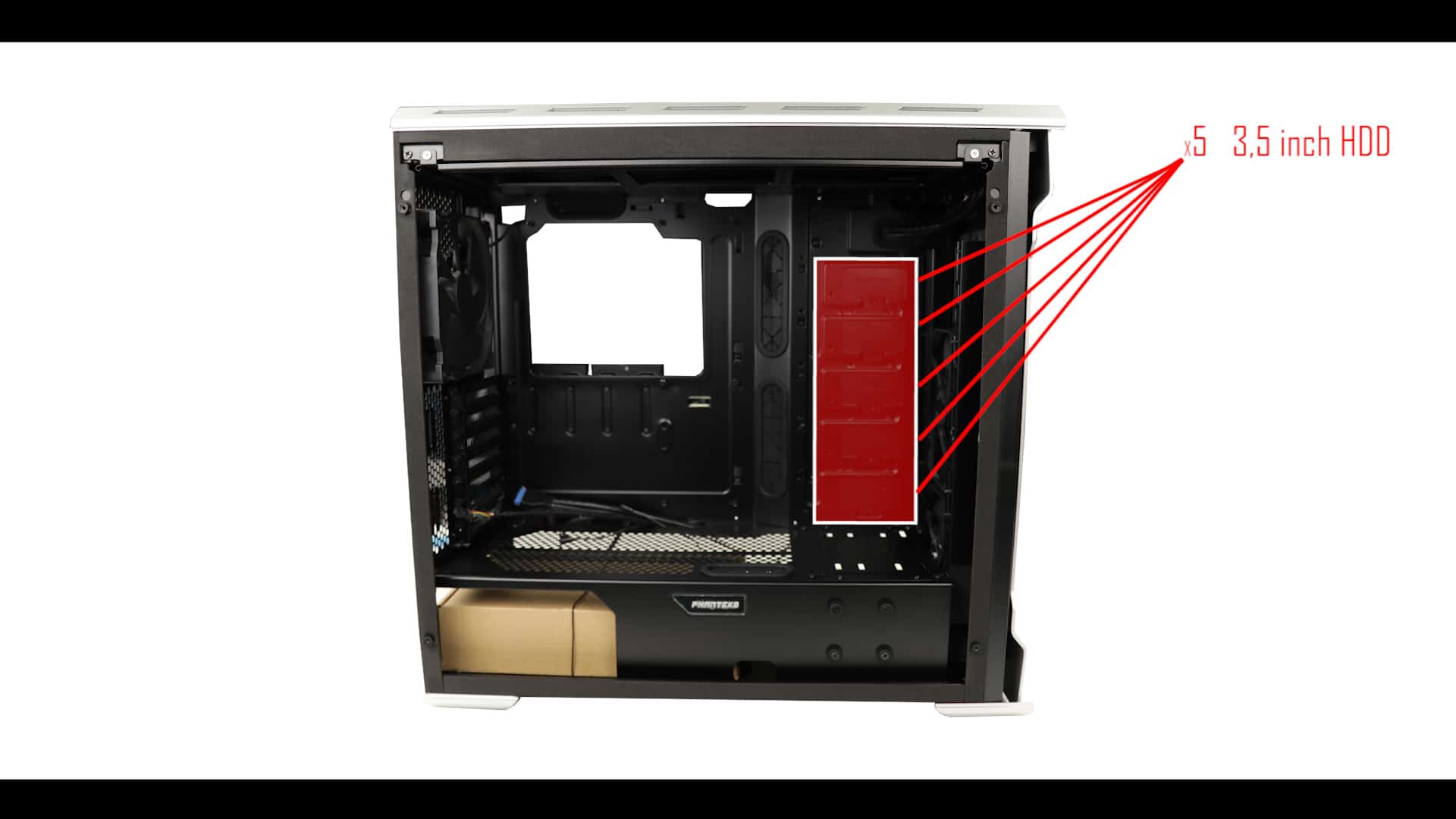
and 2 pre-installed 3.5 inch modular hard disk trays east of our PSU.
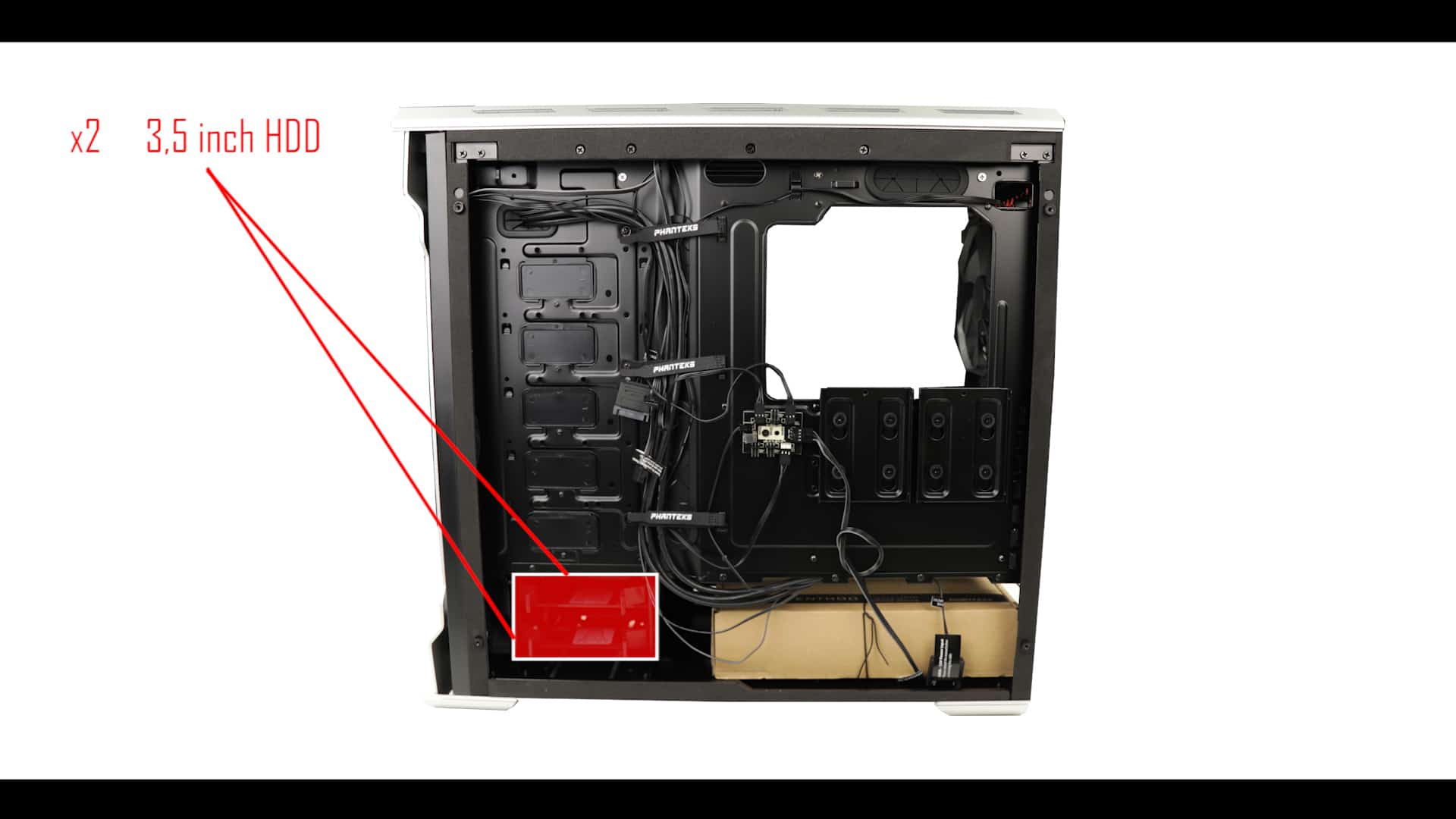
SSD wise, we have 2 3.5 inch sliding trays on the back of our case.

That’s a total of 9 hard disks… you could potentially house Google in this case!
The rear
On the rear end of our case, we have a 140 mm high pressure exhaust fan,
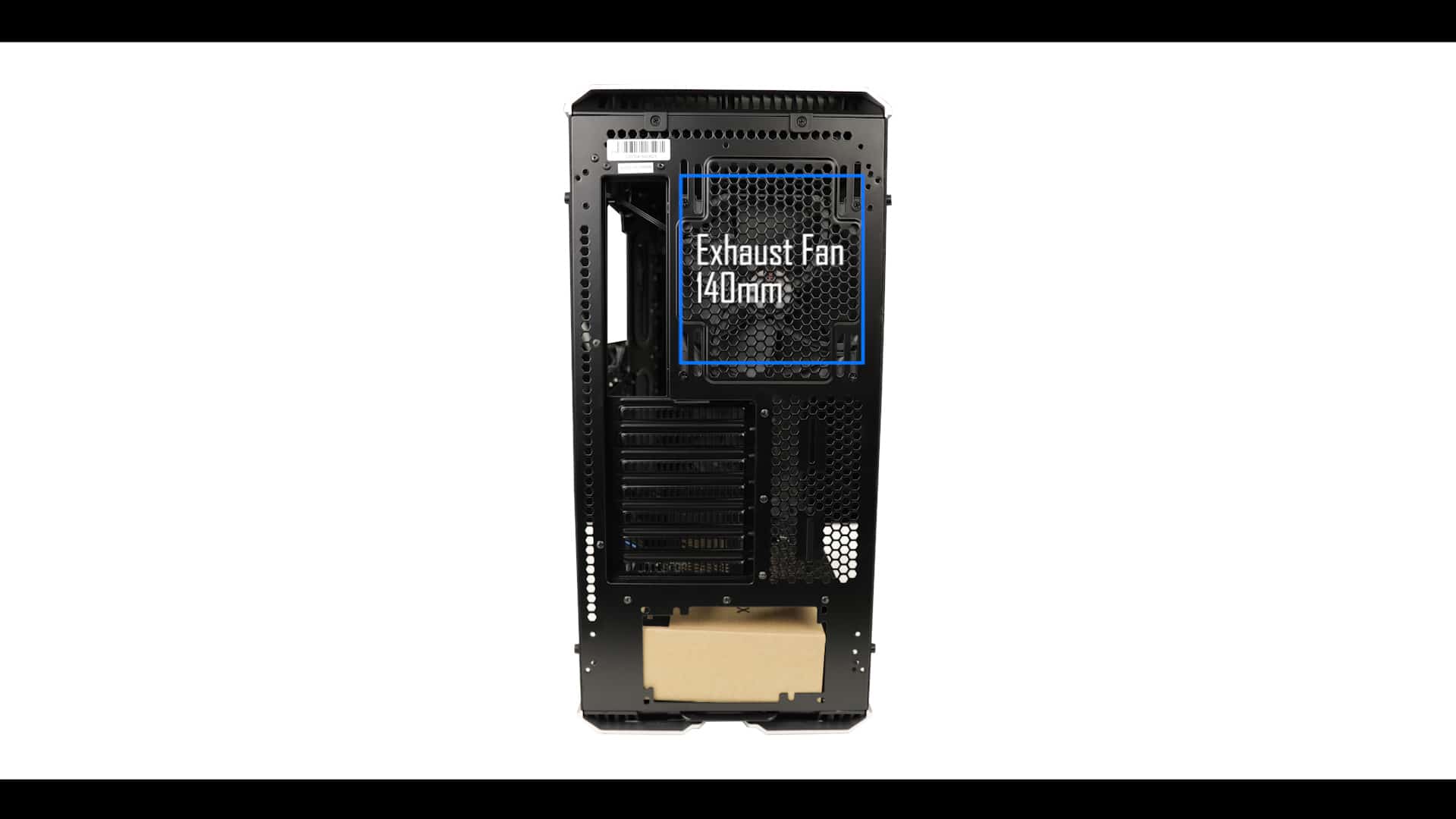
and 7 back shields for our video cards and other accessories.
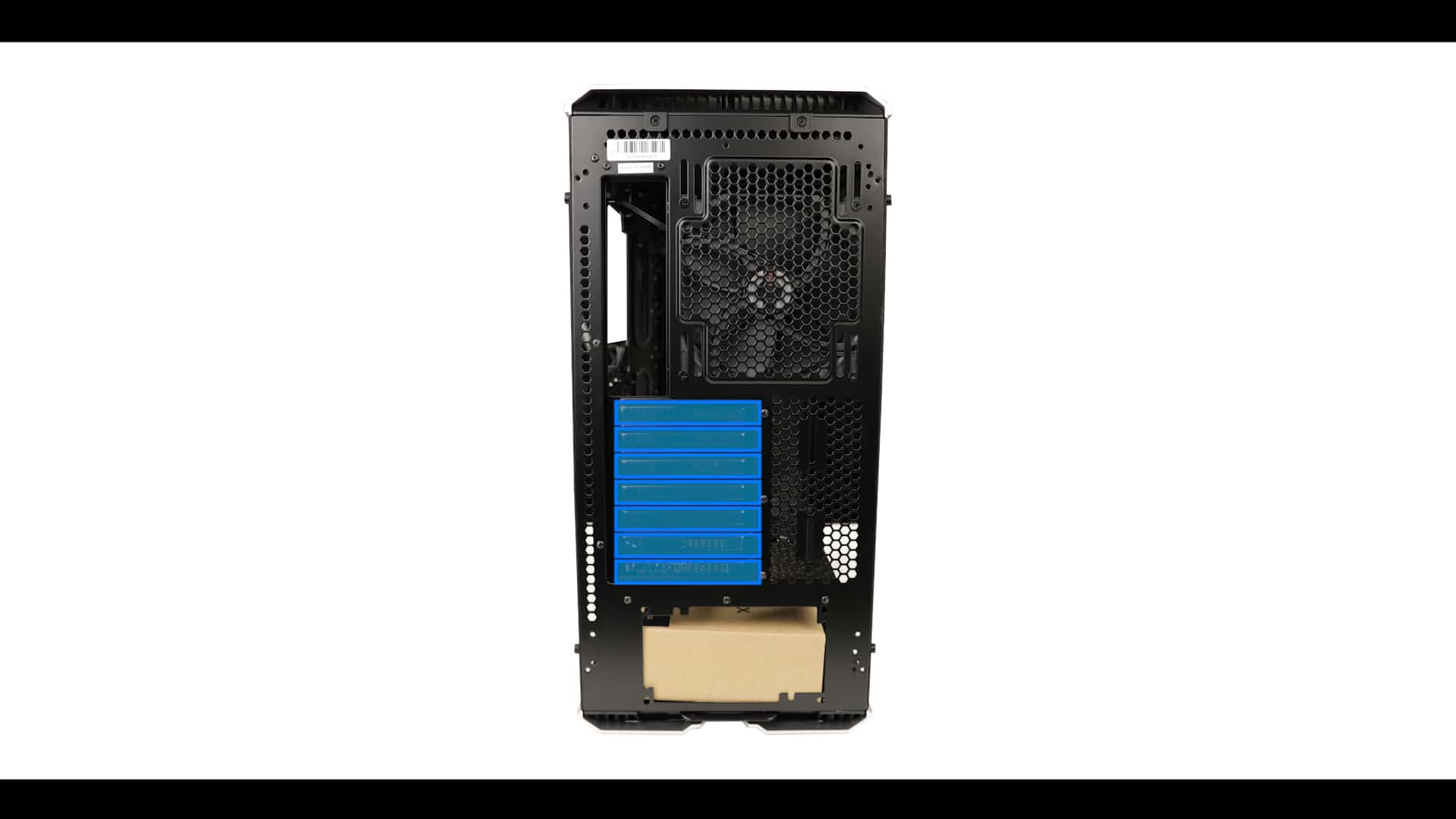
Our PSU area is partially opened on its side to let some of its colour and logos appear, but here I take exception with the design (yes I do). You will need to enter the PSU from its side, and with so many components and the potentially tight fit, I would have appreciated a removable back bracket so that we could fit the PSU right in.

Again, nothing dramatic, but I wanted to mention it.
Oh.. since we are at it, we have a sliding air filter for our PSU right here. Quit robust too!
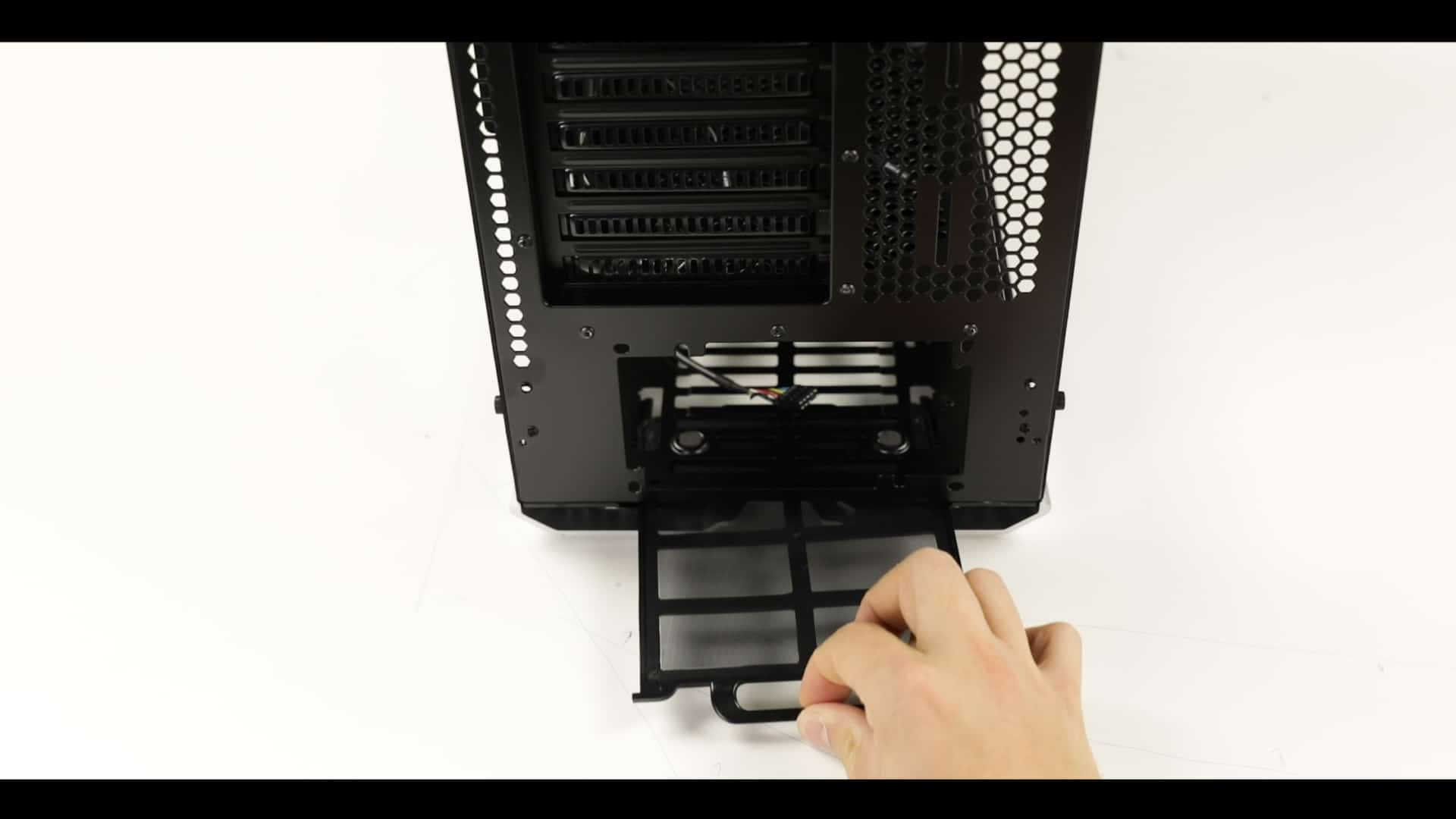
On the back of our chassis, we can our exposed fan hub, with three more available plugs to spare. And that will show itself so absolutely convenient if you have an entry level motherboard with a limited amount of fan connectors. So kudos to Phanteks for that.
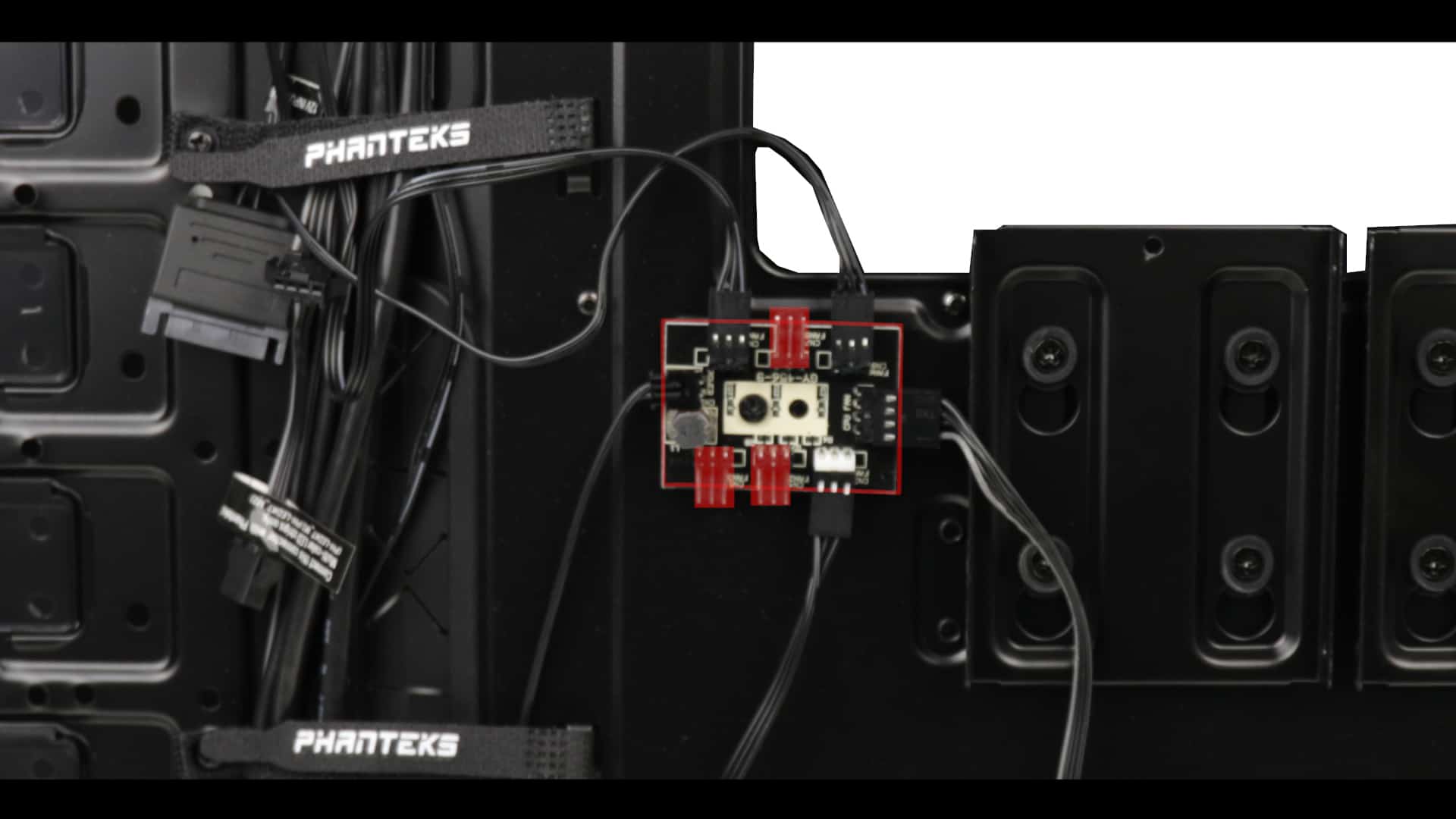
And finally, if you do want to go for a water cooling system, as you should, we can remove this plate to better fit in and access our Water pump and reservoir.

Inside the case
The motherboard floor as its screw raiser solidly pre-installed,
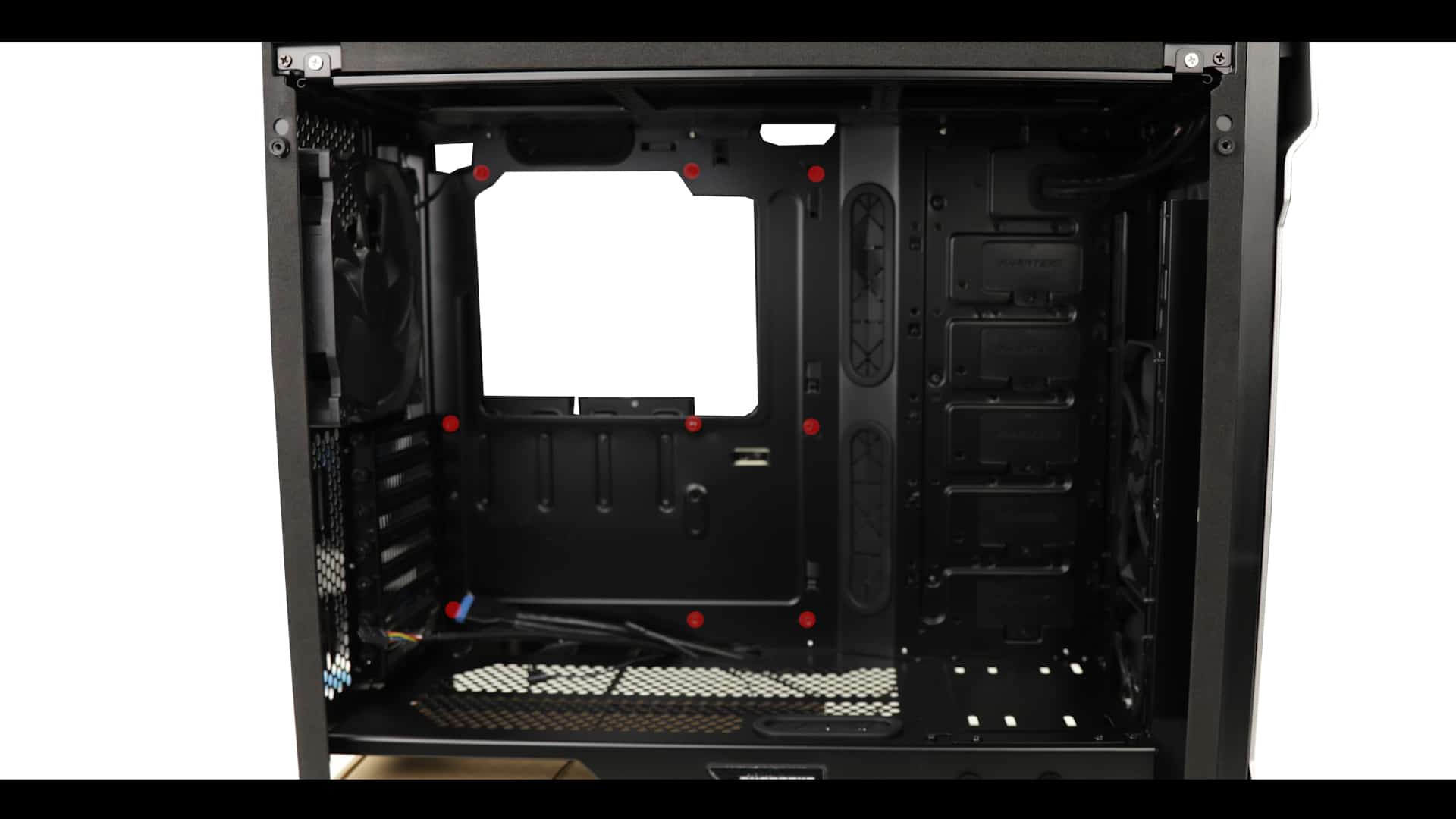
and good quality (I repeat.. GOOD quality, cable protector ready for use.
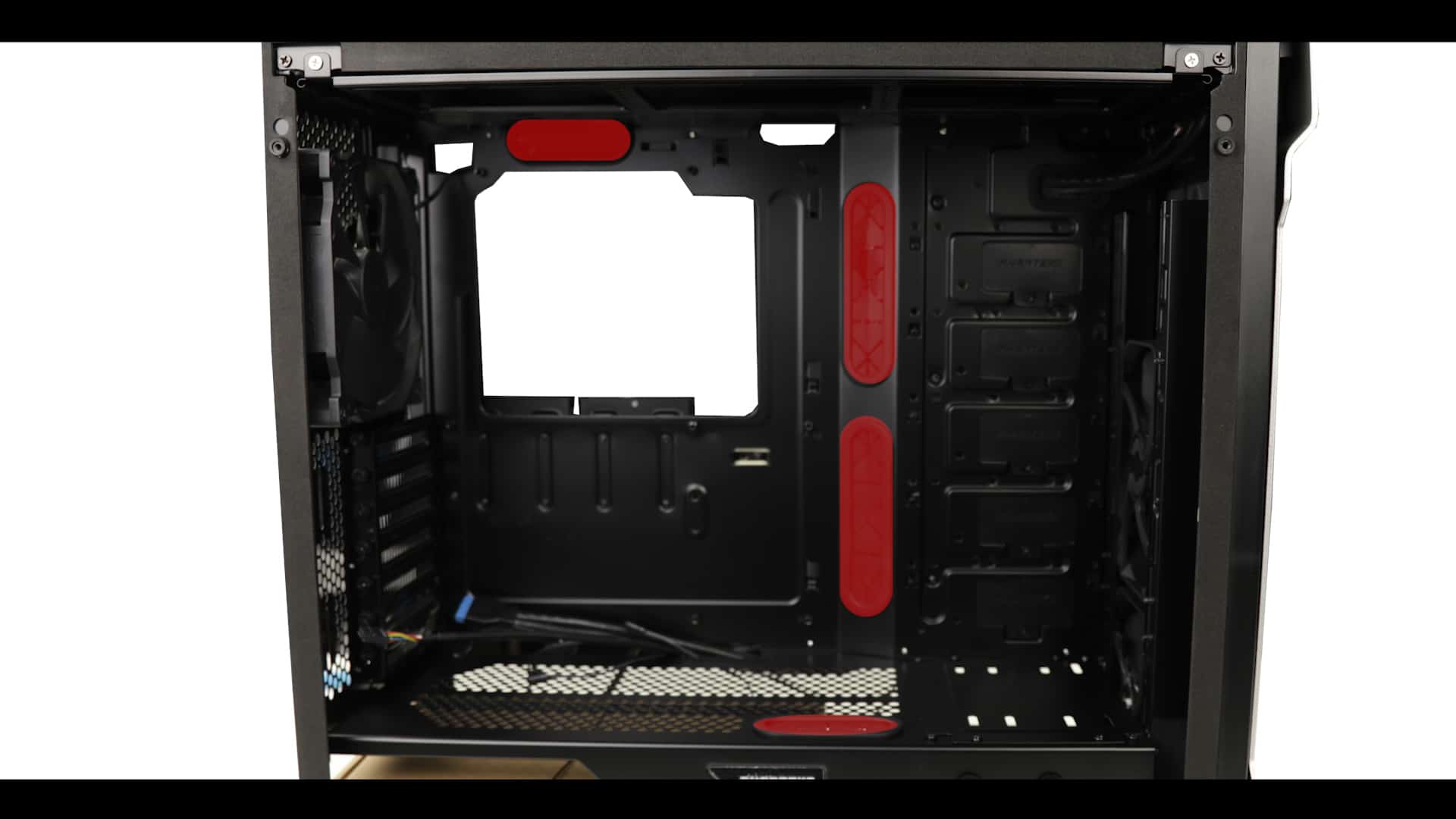
Finally, the cable management. We have 3 branded Velcro ties which seem to be durable and well placed to keep our cables in place. Only down point is the fact that we have nothing of such for our 9 CPU cable… why??????

Conclusion
Well, simply said, the best-looking case I have personally seen so far. Minimalist cases, if not doubled with premium components and perfect finish, are simply a bland looking box. But once in a while, you got one company who makes it its mission statement to do it just right. And Phanteks made that point with the Enthoo Evolv ATX.
Sure, I have a few critics: The PSU back bracket seems necessary, no type C USB plug on the front IO, and the EATX claimed board floor, is not EATX compatible. Really, I tried.
But everything about this case, from its premium and beautifully executed aesthetic to its components, screams perfection.
And from the custom cut tempered glass to its sandblasted finished aluminum sheets, you find yourself with a case which is now arguably the very best bang for your buck.
The street price of the Phanteks ENTHOO EVOLV ATX Tempered Glass edition is 189,00 USD. Let this sink in… and I can tell you right now, this case felt more premium, and had more built quality to it, than some cases I worked with which costs 500 bucks.
Actually, this will be the case I am selecting for my Coffee Lake build, scheduled for December.
Oh, I almost forgot, I am giving it the Laurent’s Choice Best Value award 2017 (case category of course).
Mic Drop!

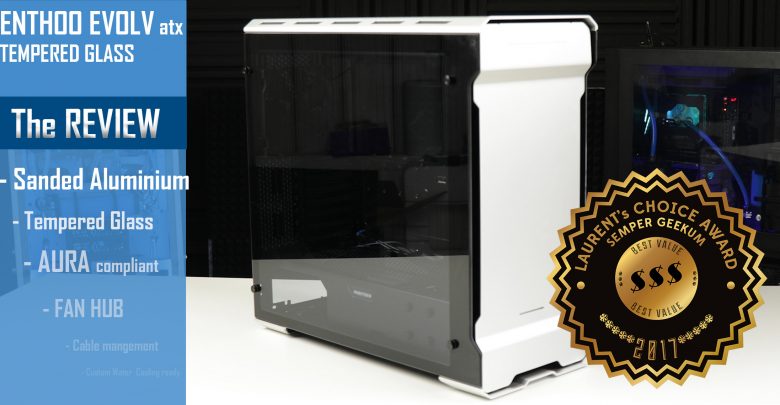
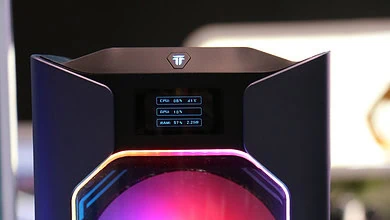
Hello, you have a great finesse in writing the blogs. Keep on writing more on these lines. Enjoyed reading this, great insights. Thanks!